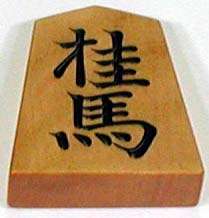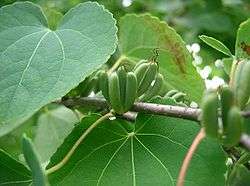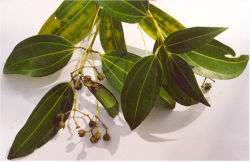Definify.com
Definition 2025
桂
桂
Translingual
Han character
桂 (radical 75 木+6, 10 strokes, cangjie input 木土土 (DGG), four-corner 44914, composition ⿰木圭)
References
- KangXi: page 525, character 2
- Dai Kanwa Jiten: character 14755
- Dae Jaweon: page 913, character 5
- Hanyu Da Zidian: volume 2, page 1193, character 5
- Unihan data for U+6842
Chinese
|
simp. and trad. |
桂 | |
|---|---|---|
Glyph origin
| Characters in the same phonetic series (圭) (Zhengzhang, 2003) | |
|---|---|
| Old Chinese | |
| 街 | *kreː, *kreː |
| 鞋 | *ɡreː, *ɡreː, *ɡreː |
| 娾 | *ŋreː, *ŋreːʔ |
| 佳 | *kreː |
| 鮭 | *ɡreː, *kʷeː, *kʰʷeː |
| 涯 | *ŋreː, *ŋre |
| 崖 | *ŋreː, *ŋre |
| 啀 | *ŋreː |
| 厓 | *ŋreː |
| 捱 | *ŋreː |
| 睚 | *ŋreːs |
| 娃 | *qreː |
| 洼 | *qreː, *qʷraː, *kʷeː |
| 哇 | *qreː, *qʷraː |
| 胿 | *ɡeː, *kʷeː |
| 溎 | *qeːns |
| 觟 | *ɡʷraːʔ |
| 黊 | *ɡʷraːʔ, *ɡʷreːs, *ɡʷeː |
| 蘳 | *ɡʷraːʔ, *qʰʷe |
| 蛙 | *qʷraː, *qʷreː |
| 窪 | *qʷraː |
| 卦 | *kʷreːs |
| 挂 | *kʷreːs |
| 掛 | *kʷreːs |
| 詿 | *kʷreːs, *ɡʷreːs |
| 罣 | *kʷreːs, *ɡʷreːs, *kʷeːs |
| 絓 | *kʰʷreː, *ɡʷreːs |
| 鼃 | *ɢʷreː, *qʷreː |
| 圭 | *kʷeː |
| 珪 | *kʷeː |
| 邽 | *kʷeː |
| 閨 | *kʷeː |
| 袿 | *kʷeː |
| 窐 | *kʷeː, *ɡʷeː |
| 茥 | *kʷeː, *kʰʷeː |
| 桂 | *kʷeːs |
| 筀 | *kʷeːs |
| 奎 | *kʰʷeː |
| 刲 | *kʰʷeː |
| 蝰 | *kʰʷeː |
| 楏 | *kʰʷeː |
| 睳 | *qʰʷeː |
| 畦 | *ɡʷeː |
| 眭 | *ɡʷeː, *sqʰʷe, *qʰʷe, *qʰʷi |
| 烓 | *qʷeː, *kʰʷeːŋʔ |
| 跬 | *kʰʷeʔ |
| 恚 | *qʷes |
| 硅 | *qʰʷreɡ |
Phono-semantic compound (形聲, OC *kʷeːs) : semantic 木 + phonetic 圭 (OC *kʷeː) – a type of plant.
Pronunciation
- Mandarin
- (Standard Chinese, Beijing)+
- Pinyin:
- Zhuyin: ㄍㄨㄟˋ
- Wade-Giles: kuei4
- Gwoyeu Romatzyh: guey
- IPA (key): /ku̯eɪ̯⁵¹/
- (Standard Chinese, Beijing)+
- Cantonese
- (Standard Cantonese, Guangzhou)+
- Jyutping: gwai3
- Yale: gwai
- Cantonese Pinyin: gwai3
- IPA (key): /kʷɐi̯³³/
- (Standard Cantonese, Guangzhou)+
- Min Nan
- (Hokkien)
- Pe̍h-ōe-jī: kùi
- Tâi-lô: kuì
- Phofsit Daibuun: kuix
- IPA (Xiamen): /kui²¹/
- IPA (Quanzhou): /kui⁴¹/
- IPA (Zhangzhou): /kui²¹/
- IPA (Taipei): /kui¹¹/
- IPA (Kaohsiung): /kui²¹/
- (Hokkien)
- Dialectal data▼
| Variety | Location | 桂 |
|---|---|---|
| Mandarin | Beijing | /kuei⁵¹/ |
| Harbin | /kuei⁵³/ | |
| Tianjin | /kuei⁵³/ | |
| Jinan | /kuei²¹/ | |
| Qingdao | /kue⁴²/ | |
| Zhengzhou | /kuei³¹²/ | |
| Xi'an | /kuei⁴⁴/ | |
| Xining | /kuɨ²¹³/ | |
| Yinchuan | /kuei¹³/ | |
| Lanzhou | /kuei¹³/ | |
| Ürümqi | /kuei²¹³/ | |
| Wuhan | /kuei³⁵/ | |
| Chengdu | /kuei¹³/ | |
| Guiyang | /kuei²¹³/ | |
| Kunming | /kuei²¹²/ | |
| Nanjing | /kuəi⁴⁴/ | |
| Hefei | /kue⁵³/ | |
| Jin | Taiyuan | /kuei⁴⁵/ |
| Pingyao | /kuei³⁵/ | |
| Hohhot | /kuei⁵⁵/ | |
| Wu | Shanghai | /kue³⁵/ |
| Suzhou | /kue̞⁵¹³/ | |
| Hangzhou | /kui⁴⁴⁵/ | |
| Wenzhou | /t͡ɕy⁴²/ | |
| Hui | Shexian | /kue³²⁴/ |
| Tunxi | /t͡ɕye⁴²/ | |
| Xiang | Changsha | /kuei⁵⁵/ |
| Xiangtan | /kuəi⁵⁵/ | |
| Gan | Nanchang | /kui⁴⁵/ |
| Hakka | Meixian | /kui⁵³/ |
| Taoyuan | /kui⁵⁵/ | |
| Cantonese | Guangzhou | /kwɐi³³/ |
| Nanning | /kʷɐi³³/ | |
| Hong Kong | /kwɐi³³/ | |
| Min | Xiamen (Min Nan) | /kui²¹/ |
| Fuzhou (Min Dong) | /kiɛ²¹²/ | |
| Jian'ou (Min Bei) | /ky³³/ | |
| Shantou (Min Nan) | /kui²¹³/ | |
| Haikou (Min Nan) | /kui³⁵/ |
| Rime | |
|---|---|
| Character | 桂 |
| Reading # | 1/1 |
| Initial (聲) | 見 (28) |
| Final (韻) | 齊 (40) |
| Tone (調) | Departing (H) |
| Openness (開合) | Closed |
| Division (等) | IV |
| Fanqie | 古惠切 |
| Reconstructions | |
| Zhengzhang Shangfang |
/kweiH/ |
| Pan Wuyun |
/kʷeiH/ |
| Shao Rongfen |
/kuɛiH/ |
| Edwin Pulleyblank |
/kwɛjH/ |
| Li Rong |
/kueiH/ |
| Wang Li |
/kiweiH/ |
| Bernard Karlgren |
/kiweiH/ |
| Expected Mandarin Reflex |
guì |
| Zhengzhang system (2003) | |
|---|---|
| Character | 桂 |
| Reading # | 1/1 |
| No. | 4579 |
| Phonetic component |
圭 |
| Rime group |
支 |
| Rime subdivision |
0 |
| Corresponding MC rime |
桂 |
| Old Chinese |
/*kʷeːs/ |
Definitions
桂
- osmanthus; sweet osmanthus
- cassia; Chinese cinnamon
- true cinnamon; Saigon cinnamon; Indonesian cinnamon
- laurel; bay laurel
- of or relating to Guilin, Guangxi, or the region of the Gui River
- A surname.
Compounds
Japanese
Kanji
(“Jinmeiyō” kanji used for names)
Readings
- Goon: かい (kai)
- Kan’on: けい (kei)
- Kun: かつら (katsura), めかつら (mekatsura)
- Nanori: かつ (katsu), よし (yoshi), か (ka)
Compounds
|
Etymology 1
| Kanji in this term |
|---|
| 桂 |
|
かつら Jinmeiyō |
| kun'yomi |
From Old Japanese. Originally a compound of 香 (ka, “fragrance, good smell”) + 出 (zu, “to come out, to put something out”) + ら (ra, nominalizing suffix): "that which puts out a good smell", from the way the wood smells good.
Pronunciation
Alternative forms
- 楓 (uncommon)
Noun
桂 (hiragana かつら, romaji katsura)
- the katsura tree, Cercidiphyllum japonicum, also called the Japanese Judas tree
- less commonly, the smaller Cercidiphyllum magnificum tree, more specifically called the 広葉桂 or ヒロハカツラ (hiroha katsura, “broadleaf katsura”).
- a tree on the moon, from a Chinese legend that the phases of the moon were caused by Lauraceae trees budding, blossoming, then dropping their flowers and leaves again as if in accelerated seasons
- julienned raw daikon, used as a garnish for sashimi
- alternate word for 肉桂 (nikkei, “the cinnamon or cassia tree”) or 桂皮 (keihi, “cinnamon or cassia bark”)
Derived terms
- 桂男 (katsura otoko): the katsura man, a character in the Chinese legend who lives on the moon
Proper noun
桂 (hiragana かつら, romaji Katsura)
- A male given name
- A surname.
- the west bank of the Katsura River in Kyōto
Etymology 2
| Kanji in this term |
|---|
| 桂 |
|
めかつら Jinmeiyō |
| kun'yomi |
From Old Japanese. Alternate spelling for 女桂 (mekatsura, “female katsura”), an archaic name for the cinnamon tree. Compare 男桂 (okatsura, “male katsura: the katsura tree”). Appears with this reading in the 和名類聚抄 (Wamyō Ruijushō), a Japanese dictionary of Chinese characters completed in 938.
Pronunciation
Alternative forms
- 女桂 (mekatsura)
Noun
桂 (hiragana めかつら, romaji mekatsura)
- the cinnamon tree, or other closely related trees in genus Cinnamomum
Synonyms
- 肉桂 (nikkei)
Etymology 3
| Kanji in this term |
|---|
| 桂 |
|
けい Jinmeiyō |
| on'yomi |
Pronunciation
Noun
- the cinnamon or cassia tree
- common name for various other trees in family Lauraceae
- in China, the 木犀 (mokusei) or sweet osmanthus tree
Synonyms
Etymology 4
| Kanji in this term |
|---|
| 桂 |
|
けい Jinmeiyō |
| on'yomi |
From a Chinese legend that the phases of the moon were caused by kei trees, which would bud, blossom, then drop their flowers and leaves again as if in accelerated seasons.
Pronunciation
Noun
- (euphemistic) the moon
Synonyms

Etymology 5
| Kanji in this term |
|---|
| 桂 |
|
けい Jinmeiyō |
| on'yomi |
Abbreviation of 桂馬 (keima), the knight in 将棋 (shōgi, “Japanese chess”).
Pronunciation
- On'yomi: Kan'on
- (Tokyo) けい [kèé] (Heiban - [0])[1]
- (Tokyo) けい [kéꜜè] (Atamadaka - [1])[1]
- IPA(key): [ke̞ː]
Noun
Synonyms
- 桂馬 (keima)
References
- 1 2 3 4 2006, 大辞林 (Daijirin), Third Edition (in Japanese), Tōkyō: Sanseidō, ISBN 4-385-13905-9
- ↑ 1998, NHK日本語発音アクセント辞典 (NHK Japanese Pronunciation Accent Dictionary) (in Japanese), Tōkyō: NHK, ISBN 978-4-14-011112-3
Korean
Hanja
桂 • (gye) (hangeul 계, revised gye, McCune-Reischauer kye, Yale kyey)
- This term needs a translation to English. Please help out and add a translation, then remove the text
{{rfdef}}.
Vietnamese
Han character
桂 (quế)
- This term needs a translation to English. Please help out and add a translation, then remove the text
{{rfdef}}.

